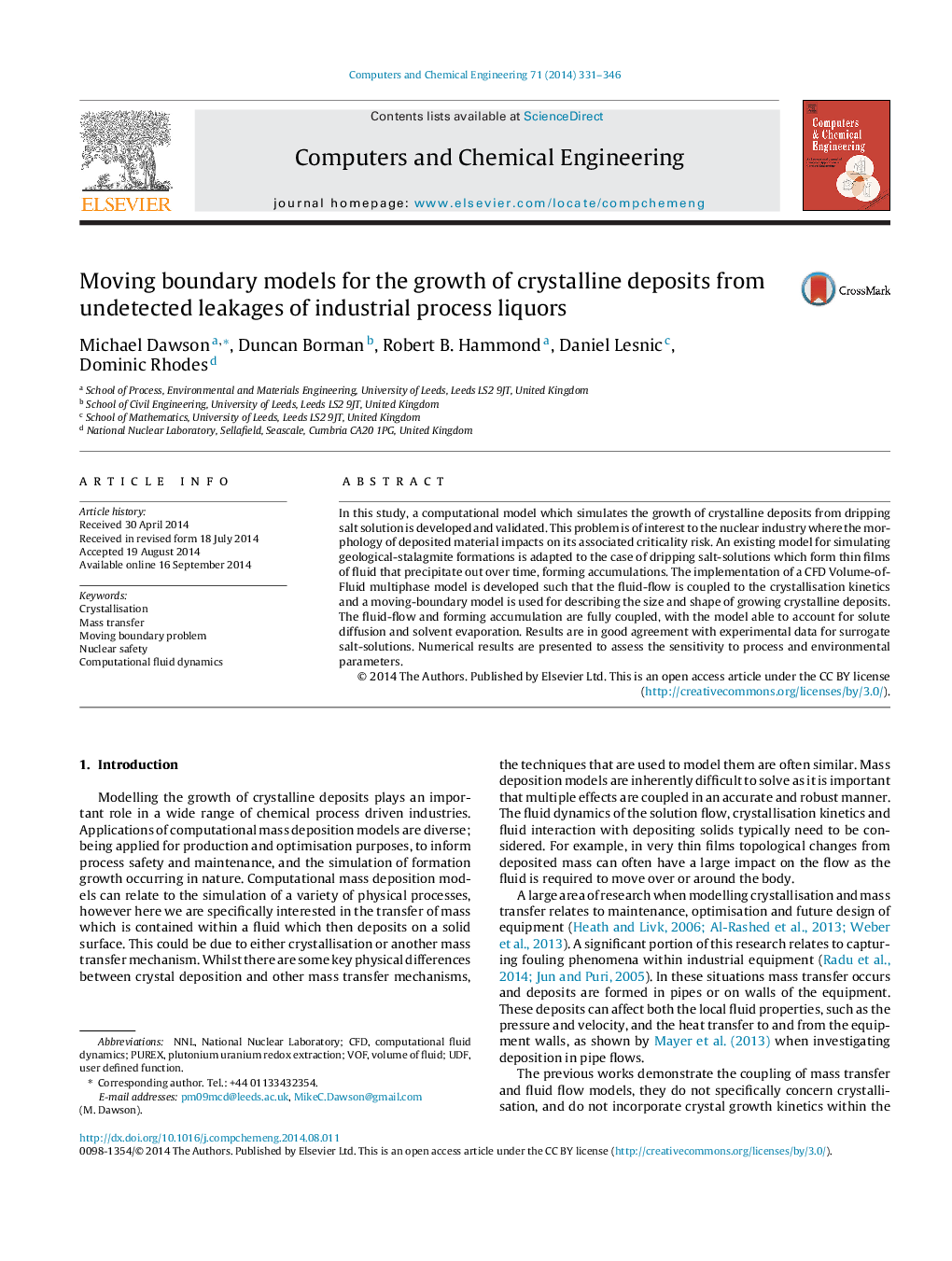| Article ID | Journal | Published Year | Pages | File Type |
|---|---|---|---|---|
| 6595565 | Computers & Chemical Engineering | 2014 | 16 Pages |
Abstract
In this study, a computational model which simulates the growth of crystalline deposits from dripping salt solution is developed and validated. This problem is of interest to the nuclear industry where the morphology of deposited material impacts on its associated criticality risk. An existing model for simulating geological-stalagmite formations is adapted to the case of dripping salt-solutions which form thin films of fluid that precipitate out over time, forming accumulations. The implementation of a CFD Volume-of-Fluid multiphase model is developed such that the fluid-flow is coupled to the crystallisation kinetics and a moving-boundary model is used for describing the size and shape of growing crystalline deposits. The fluid-flow and forming accumulation are fully coupled, with the model able to account for solute diffusion and solvent evaporation. Results are in good agreement with experimental data for surrogate salt-solutions. Numerical results are presented to assess the sensitivity to process and environmental parameters.
Keywords
Related Topics
Physical Sciences and Engineering
Chemical Engineering
Chemical Engineering (General)
Authors
Michael Dawson, Duncan Borman, Robert B. Hammond, Daniel Lesnic, Dominic Rhodes,
